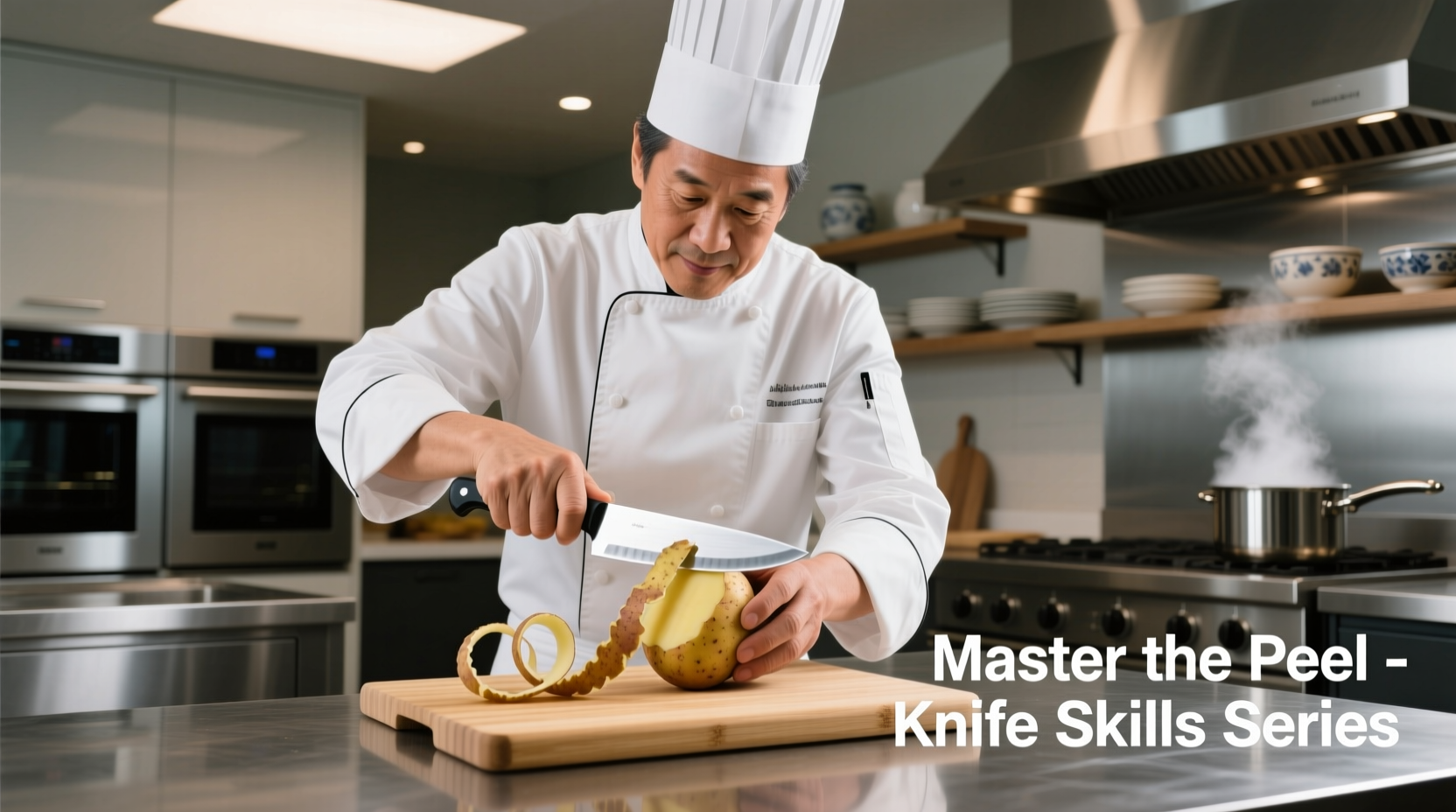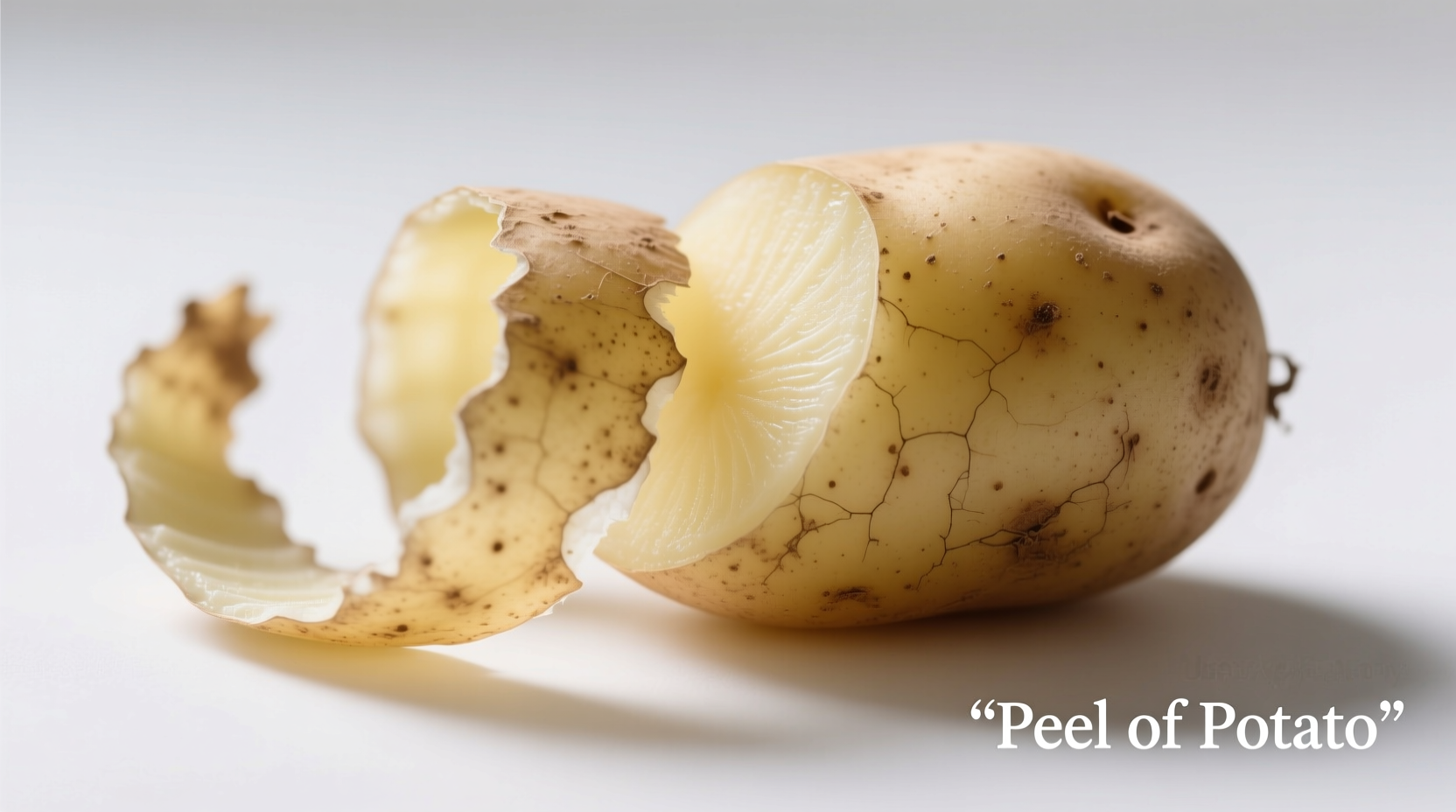Peeling potatoes properly preserves nutrients and texture. Use a sharp Y-shaped peeler in downward strokes for thin, even removal while keeping maximum nutrition. Always remove green spots and sprouts as they contain potentially harmful compounds.
Discover the complete science-backed guide to potato peeling that transforms your cooking results. Whether you're preparing mashed potatoes, roasting wedges, or making crispy skins, understanding proper peeling techniques affects flavor, nutrition, and food safety. This guide reveals professional chef methods, nutritional insights, and creative ways to utilize every part of your potato.
Why Proper Potato Peeling Matters
Many home cooks waste valuable nutrients by removing too much of the potato. The skin contains nearly half the fiber and significant potassium, vitamin C, and antioxidants. However, improper peeling leaves behind potentially harmful compounds found in green spots or sprouts. The key is knowing exactly how much to remove while preserving maximum nutrition.

Understanding Potato Skin Nutrition
Potato skins aren't just protective layers—they're nutritional powerhouses. When prepared correctly, they enhance both flavor and health benefits of your dishes. But certain conditions require complete removal for safety.
| Nutrient | With Skin (100g) | Without Skin (100g) | Difference |
|---|---|---|---|
| Dietary Fiber | 2.2g | 1.2g | +83% |
| Potassium | 421mg | 310mg | +36% |
| Vitamin C | 11.4mg | 8.2mg | +39% |
| Antioxidants | High | Moderate | +50-70% |
Source: USDA FoodData Central (2023)
When to Keep Skins On vs. Remove Completely
Not all potatoes require peeling. Understanding which varieties benefit from skin-on preparation prevents unnecessary nutrient loss:
- New potatoes: Always cook with skins on—they're thin and tender
- Russet potatoes: Peel for mashed potatoes, keep skins on for baking
- Yukon Golds: Skins are thin enough to leave on for most preparations
- Sweet potatoes: Rich in nutrients just under skin—roast with skins on
Never consume potatoes with significant green discoloration. According to FDA food safety guidelines, these contain solanine—a naturally occurring toxin that can cause digestive issues even in small amounts. When greening occurs, remove affected areas generously or discard the entire potato if discoloration is widespread.
Professional Potato Peeling Techniques
Master these methods used by professional kitchens for perfect results every time:
Y-Shaped Peeler Method (Most Efficient)
Hold potato firmly in non-dominant hand. Position Y-peeler at top of potato with blade angled slightly downward. Apply gentle pressure while moving peeler away from body in smooth strokes. Rotate potato as you work. This technique removes only 1-2mm of flesh while preserving maximum nutrients.
Knife Peeling (For Precision Work)
Use a 3-4 inch paring knife for small potatoes or detailed work. Hold knife at 30-degree angle to potato surface. Make thin, downward cuts following potato's contour. Ideal for removing eyes and sprouts precisely.
Alternative Methods for Special Situations
- Blanching method: Boil potatoes 2-3 minutes, then plunge in ice water—skins slip right off
- For large batches: Use food-safe scrub brush under running water instead of peeling
- When skins are thick: Microwave potatoes 1-2 minutes to loosen skins before peeling
Creative Uses for Potato Peels
Reduce food waste while enhancing flavor with these professional chef techniques:
Potato Peel Crisps
Toss clean peels with 1 tsp olive oil, ¼ tsp smoked paprika, and pinch of sea salt. Spread on baking sheet and bake at 400°F (200°C) for 12-15 minutes until crisp. Perfect crunchy topping for soups or salads.
Nutrient-Rich Stock
Simmer potato peels with onion ends, celery leaves, and herb stems for 45 minutes. Strain and use as vegetable stock base—adds natural sweetness and body to soups.
Gardening Applications
Buried potato peels decompose quickly and add potassium to soil. Chop peels and mix into garden beds before planting tomatoes or peppers for natural nutrient boost.
Troubleshooting Common Potato Issues
Preventing Browning After Peeling
Place peeled potatoes immediately in bowl of cold water with tablespoon of lemon juice or vinegar. The acid prevents oxidation while you prepare other ingredients. Change water if preparing hours in advance.
Handling Sprouted Potatoes
Remove all sprouts and eyes with paring knife, cutting generously around affected areas. If multiple sprouts appear or potato feels soft, discard entirely. According to University of Illinois Extension guidelines, sprouted potatoes contain higher solanine levels that cooking doesn't eliminate.
Dealing with Different Potato Varieties
Russets have thick skins requiring more aggressive peeling. Fingerlings have thin, delicate skins—use Y-peeler gently. Purple potatoes have concentrated nutrients just under skin—peel minimally. Always adjust technique based on variety for optimal results.
Essential Potato Peeling Tools
Invest in these professional-grade tools for perfect results:
- Y-shaped stainless steel peeler (Kuhn Rikon Original is chef favorite)
- Sharp paring knife (3-4 inch blade for precision work)
- Food-safe scrub brush for cleaning unpeeled potatoes
- Bowl of acidulated water for storing peeled potatoes
Avoid serrated peelers—they remove too much flesh. Replace standard peelers annually as blades dull, removing more potato with each use.
Food Safety Guidelines for Potato Preparation
Follow these evidence-based safety practices from FDA guidelines:
- Wash hands thoroughly before handling potatoes
- Clean potatoes under running water before peeling
- Use separate cutting board for potatoes if preparing raw meat
- Store peeled potatoes in acidulated water if not cooking immediately
- Discard potatoes with extensive greening or soft spots
Remember that cooking doesn't eliminate solanine toxins found in green potatoes. When in doubt about safety, discard the potato. Foodborne illness risks outweigh potential waste.











 浙公网安备
33010002000092号
浙公网安备
33010002000092号 浙B2-20120091-4
浙B2-20120091-4